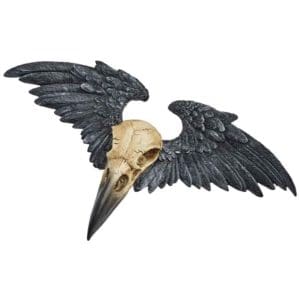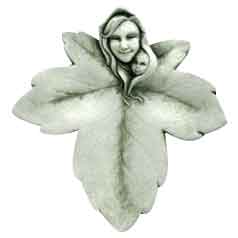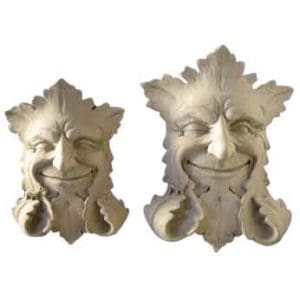The Roman Occupation Roman Coin Set 4
$7.43
Availability: 2 in stock
The reproduction bronze plated Dupondius coin of Hadrian is based on a coin that was struck between 117-138 AD and shows a bust of Hadrian on the obverse and Aeternitas holding the heads of the sun and the moon on the reverse. The reproduction 22ct gold plated Aureus of Claudius is based on a coin that was struck between 41-54 AD and shows a laureate bust of Claudius on the obverse and DE BRITANN on a triumphal arch on the reverse. The reproduction bronze plated As of Claudius shows the bare head of Claudius on the obverse and palladium of Minerva on the reverse. The three coins are held in clear plastic blisters and are supplied in full color pamphlet style packaging, complete with images and historical information relating to the Roman occupation of Britain.
Roman coins were not just a means of paying for goods. The obverse of the coins portrayed the ruling Emperors face. The reverse of the coins were used to communicate great events or to promote the status of the Emperor to his people. For example, the Emperor may have depicted a god that had attributes with which he wished to be associated. The coins were circulated throughout the Empire bringing news, perhaps of events that had taken place far away.
The Romans invaded Britain in 43 AD when about 40,000 troops crossed the channel under the command of Aulus Platutius. Claudius arrived in Britain to take command of the later stages of the campaign and earn an official triumph. Hadrian became emperor in 117 AD and set about implementing significant changes which marked a turning point in both Roman and European history. Hadrians Wall is regarded as the finest example of his achievements and has provided historians with an abundance of evidence enabling a clearer understanding of the Roman occupation.
Key Features:
- Replica Historical Coin
- Great for Kids, Collectors, Gamers, and History Groups
- Made From Pewter
- Cast From Originals
1 review for The Roman Occupation Roman Coin Set 4
Only logged in customers who have purchased this product may leave a review.












mcicero020 (verified owner) –
The aureus has an 18mm diameter and is 1.5mm thick, with WRL stamped only on the reverse. The dupondius is approx. 18mm x 16mm and 2mm thick, with WRL stamped on both sides. The as is approx. 29mm in diameter and 2mm thick with an WRL stamp again on both sides, though it’s noticeably larger on the reverse. Usually Westair tries to place the stamp so that it’s unobtrusive but it’s particularly visible on their bronze reproductions and you can make it out on the reverse of the as even from a distance.
The as and dupondius are darker in real life than they appear in the photo on this listing, and their designs are harder to see compared to the brighter aureus. This is a natural difference between bronze and gold coins, but it’s something to be aware of since the photo makes them look quite light in color.
I bought this set with the intention of taking the coins out, so although I was expecting to need to destroy the packaging I was hoping I might be able to salvage it as reference to help identify each coin later. These cardboard booklets are printed as a trifold, with the leftmost side is folded over to hold down the blister pack of coins. It seemed well-glued for those of you who’d want to leave it intact, but the glue was also weak enough that I could peel back the cardboard and remove the coins without damaging the booklet at all. All three coins are held in the same blister pack, which does not stay closed on its own but is reusable should you want to put the coins back in. I mention this because I’ve found that there are a few types of packaging used in the Westair reproductions sold here and some of them are easier to disassemble than others; this is one of the nicer blister packs.